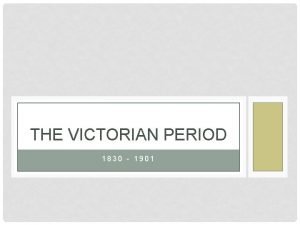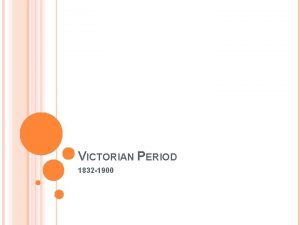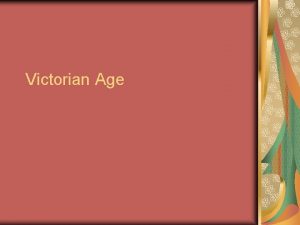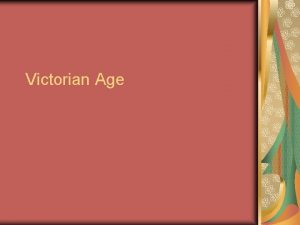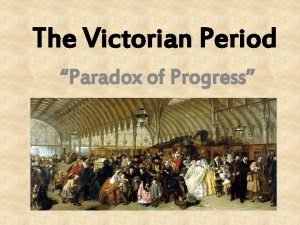Victorian Homes The Victorian period is the time













- Slides: 13

Victorian Homes

The Victorian period is the time when Queen Victoria ruled Britain. With the beginning of the railways and new manufacturing processes, previously locally produced building materials became available all over the country. This meant the end of all houses in the local area being built using the same building materials. Houses made of local stone, timber and straw could now, for example, be built of bricks from Bedfordshire and slate from North Wales. The new mass produced bricks were cheaper and required less preparation and maintenance, so for the first time all over the country new mansions, chapels, cottages, barns and factories were made from the same material irrespective of region.

Despite the availability of these new products vast numbers of the working population in the countryside were still living in tiny cottages, hovels and shacks well into the 20 th century. In towns poor people lived in back-to-back houses called terraced houses.

Rich Victorians favoured villas ( not the same as Roman villas), whilst the emerging middle classes of Victorian England lived in superior terraces with gardens back and front and a room for servants in the attic.

Victorian houses were built in a time when not many people had cars. In fact it was only towards the end of the Victorian period that cars were even invented. So. . . Victorian houses were built without garages as there was no need for a place to store a car. Victorian houses have chimneys because they often had a fireplace in most rooms. The fire was the only way to keep warm. Today, houses are built without chimneys because houses are kept warm via central heating. Most modern houses have radiators in each room instead of a fireplace.

Typical Characteristics of Victorian houses Bay windows (they stick out) Iron Railings Flemish brick bonding Patterns in the brickwork made from coloured bricks Stained glass in doorways and windows. Roofs made of slate. No garage Sash windows (they open by sliding the window up)

During the Victorian times more and more people moved into the new industrial towns to work in the mills and factories and rows of terraced back-to-back houses were built to house them. The houses were joined together to save space. Each row was called a terrace. Terraced houses were very small with two rooms upstairs and two downstairs. There were often no gardens, only small back yards where the outside toilet was.

Sliding sash windows were common throughout the Victorian period. Many owners of Victorian houses have today changed their windows to more modern ones.

Victorians also loved to decorate their windows.

Bay Windows (windows that projects, normally with flat front and slant sides) were very fashionable in Victorian times. Typical Victorian bay windows are three sided. The ground floor bay window often had its own slate roof, or it might continue into a first-floor bay, again topped with an individual roof. Bay windows like the ones below are clues to when the houses were built.

Houses were often decorative with fancy brickwork.

Decorative Wooden panels (bargeboards)

Decorative roof tops
 Renaissance floral design history
Renaissance floral design history Classical influence on floral design
Classical influence on floral design Victorian period in english literature
Victorian period in english literature The victorian period (1832–1901)
The victorian period (1832–1901) Victorian age timeline
Victorian age timeline The victorian age summary
The victorian age summary Romanticism vs victorianism
Romanticism vs victorianism Victorian age introduction
Victorian age introduction Conclusion of victorian age
Conclusion of victorian age Elapsed time
Elapsed time The development of children 7th edition
The development of children 7th edition A&p flix activity: resting membrane potential
A&p flix activity: resting membrane potential When is the relative refractory period
When is the relative refractory period Critical period vs sensitive period
Critical period vs sensitive period




